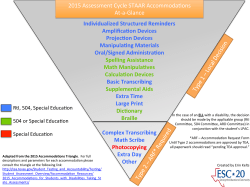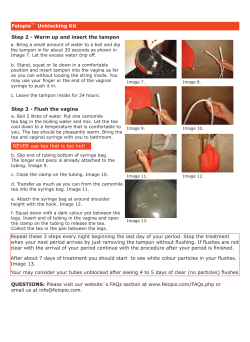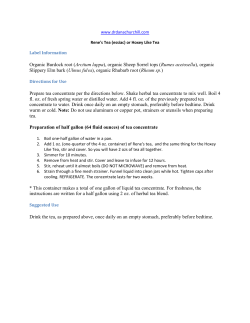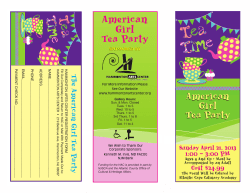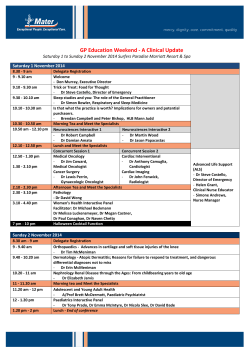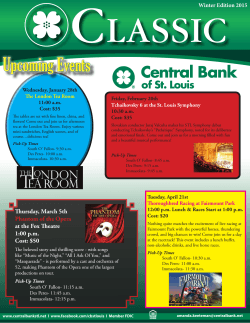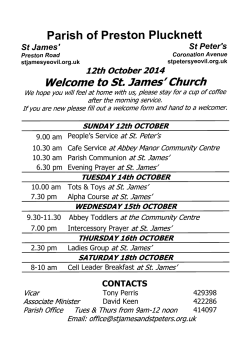
POETEA.DOC
POETEA.DOC Contents Interview Appendix: diagram 1 6 zimZalla: This object involves presenting text inside handmade tea bags. Could you explain a little about the ideas behind this and why you have chosen to present text in this way? Jo Langton: In September 2011 my grandmother sent me a program for the Warwick Words literary festival. One of the events scheduled was entitled "Poetea", and I just fell in love with that name. Poetry & tea are two things that go naturally together for me. I couldn't make that specific event, but I believe that not going allowed room for the idea to brew in my mind. On my Masters, we are encouraged to incorporate modern multimedia into our work: this isn't my cup of tea really. I wanted to infuse my presentation of text with more of an organic than technologic aspect; therefore, remembering my teenage sewing days, it was somewhat instinctive for me to take the idea of a poetry tea bag so literally. This sparked the simple yet fascinating concept of "brewing your own poem", and I began devising the physical object with no real idea of what text was to be presented inside. z: You mention "modern multimedia" and imply that this does not particularly interest you, at least not in creative terms. You imply also that the physical object still, for you, has importance and resonance. Why, for you, does the physical text or text object remain valid at a time when many argue it is becoming obsolete? JL: Modern multimedia is something that has taken time to process in my brain before appearing in my work. I'm currently exploring QR codes within my work, and this is definitely something I would like to develop further, it's another form of encryption / encoding / graphic mode of communication. Most of my poetry to date focuses so heavily on the layout of the page that words become graphics, or something in‐between; the presentation is always integral, and the 'between' is always fascinating. For "Poetea" then, I just wanted to fall back on a skill set that I already had. On the one hand, it was a logical progression for me to push the graphic surface further than the limitations of the page; on the other hand, I think I wanted a break from margins, columns, tabs (etc). I believe that the physical object is becoming more and more important in the face of modern multimedia. It is indeed this push toward the graphic, and the merging cross‐genre of art, music, computer 1 technology & language (etc) that makes us realise that text itself is both beautiful and material. Text may only be 2D at the moment as it stands on the page, but like with a still photograph, a snapshot of one event, emotion, person...soon we'll be making 3D films to better represent what we are trying to describe, as language is so often an incomplete system of expression. z: The object itself is complex, with the text hidden from initial view and also being presented in a way that encourages multiple, aleatory readings. Could you describe the structure of Poetea, explaining what its constituent parts are and how it is assembled? Do you have a preferred way that the object should be experienced, or is this entirely in the hands of the reader? JL: I'll address both parts of this question separately. Firstly, to the method of assembly: [see appendix p. 6]. The word leaves are split into two sides of the tea bag. There are approximately thirty words per side of each tea bag, and the bag itself is made from thin gauze like fabric. Therefore, when looking through one side of the fabric, the words closest to the viewer are foregrounded, as they are more visible. The words on the other side of the tea bag are dimmed through the layers of fabric: a ghosting of 'something' hiding in the background. The word leaves are organised and printed double‐sided to accommodate this 'flip side' effect. Now in regards to the experience of encountering Poetea; this experiment for me was a surrendering of poetic control, despite the fact that the words are chosen by me, I have at no point in the process actually set to writing a poem. These words were not previous poems, cut up for this purpose. These words have their own new purpose, to be shaken up, brewed to the consumers own personal taste. That is why the tea metaphor works so well for this combinatory text: we're so particular about how we take our tea, and I don't care if you're Mr. Tea, your cuppa isn't right for me! We all approach a text from our own experiences, I think Poetea just embodies and exploits this. As you rightly point out, the multiplicities of reading this text are exactly what interest me; it's about the possibility of creations permeating from my creation. 2 z: The text inside the bags is split into individual words. Do these words originate from a single text that you have cut up, a series of texts or some other source? JL: I began word mapping my text with the ten types of tea; fruity, fresh, black (etc). First, I looked up all the synonyms of the tea type. Then, I found all the rhymes for that tea type and all of its synonyms. Some words were disregarded, either on instinct or irrelevance. Through this rhythmic, formulaic process pathways started to appear. This was not the case for all the types of tea, in places I was forced to think around associated conceptual ideas. This occurs most bluntly in the "Builder's Brew", where I was forced to find an alternative route through this word jumble: here alliteration became the technique instead of rhyme. z: How does Poetea relate to the rest of your work? Is it similar, or is text object making a new direction for you? JL: I suppose text objects have always been on my poetic radar, I've made sets of postcards and handmade chaps before but nothing on this scale. I've always wanted to make textual objects, but I had to wait for the right idea to come along at the right time, otherwise it would have been arbitrary putting text onto an object that didn't quite fit. As someone interested in art, sewing, and poetry, I'm really intrigued by the crossover of these three things, and where the border lines lie, if indeed there are any: merging across disciplines is something that drives my work forward, and it wouldn't have come about it if weren't for Poetea. z: Do you regard this project as completely sui generis or can you trace any influences that have informed it? JL: Wow, okay, I had to look this phrase up! Either I'm living in a vacuum, or this phrase isn't that commonplace ‐ I think I know why: how can anything be completely free of any influence? It seems strange to me. Maybe when Latin was a spoken language things were new and exciting, but I don't see how this can still occur in the 21st Century. Everything influences, to some degree. I'm not sure whether you can trace current influences, or whether you delve subconsciously into a memory bank of 'something you liked long ago'. For me & Poetea then; it was the repetitive nature 3 of making tea whilst writing poetry; the conversations with friends; moving to Chorlton & realising I had a fabric store on my doorstep... Life influences in ways only hindsight can trace. If you want something literary and tangible then my main influence for this project would be the work of Angela Keaton. I was lovingly passed on pictures of a performance she gave at Edge Hill with poems on chocolate. I saw a twinning there with what I was trying to achieve, and this spurred me onward. Let me explain that the chocolate poetry slabs were broken up and distributed among the crowd while everyone participated in reading their fragment of choco‐text: it's both the fragmentariness and the collaborative aspect that informed me most. z: How important is it to you that you have actually made the objects? Would it matter if someone else made them for you? JL: I've been joking recently that it would be nice to have a crew of workers to help me with the daunting task of making so many of these fiddly little things! But seriously, I think if I lost the handmade aspect of Poetea it would be a shame, it's integral to the concept. The only thing I'm outsourcing for production is the use of a guillotine for the words inside the bags. I think there is something special about the fact that I have made every individual piece of this project. It's a way of me holding on to that last fragment of authorial control in a project that is so reader‐response focused. z: You are asking for responses to Poetea. What, if anything, are you expecting or hoping for? JL: As the packaging dictates: "We suggest… …that giving directions will cause poetic limitations. Brew as many times, combinations and connotations as your imagination allows." 4 There are a lot of ideas for responses that I have come up with, but I really am adamant in surrendering poetic control over to the brewer, whether they literally use the text in the bags to make prose/poetry, or take the concept and respond emotionally, photographically.... now I'm suggesting things, aren't I?! z: You are a paper poet as well as an object maker. How do these different elements of your practice relate to one another? Is the relation oppositional or complementary? JL: To me, both these elements of my practice are integral to each other. I am very concerned with the aesthetic; whether that is of the text, of the graphic surface, or of its frame. Poetea then, is a pinnacle to which everything previous gravitates towards, and everything following springs from: it is somewhat of a snowball effect. I'm working more broadly to find and destroy the perceived line between art and text, thus I approach text with a concern for its artistic presentation, and approach art from its textual qualities. The relationship therefore has to be both oppositional and complementary; my practice is not a series of projects that are fragmented from each other, but more a journey where one experiment builds toward the next, and toward a differing and broader understanding of the relationship between text / art & page / object. 5 Appendix: Poetea assembly diagram 6
© Copyright 2024

